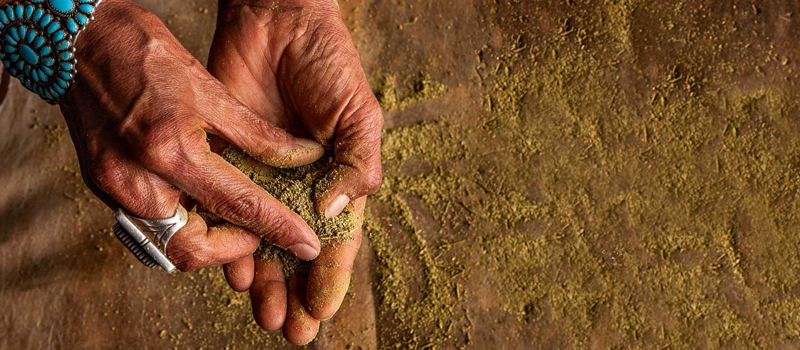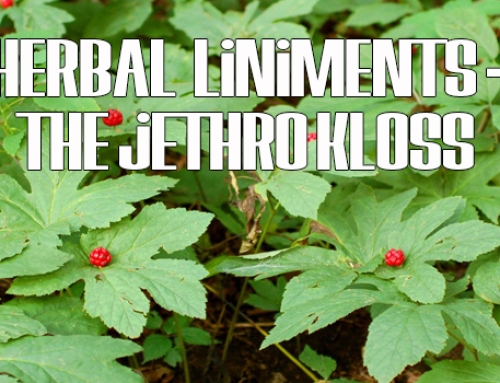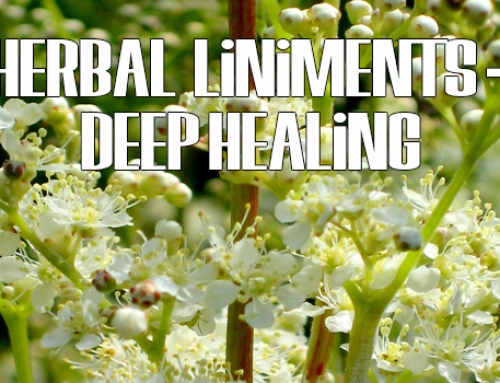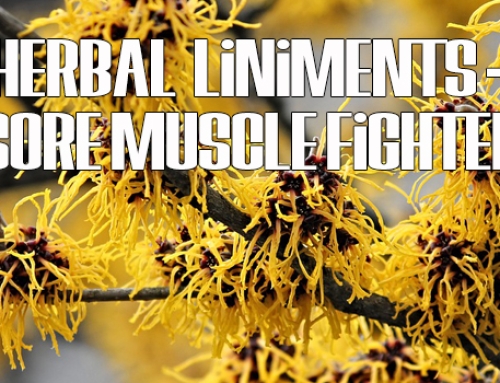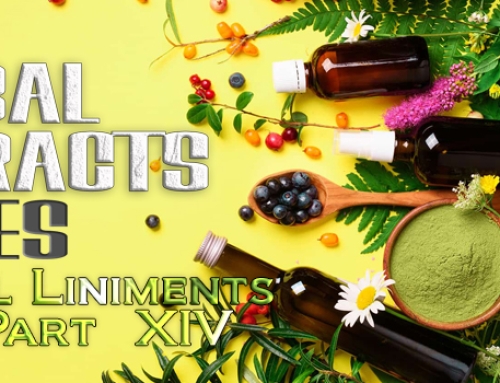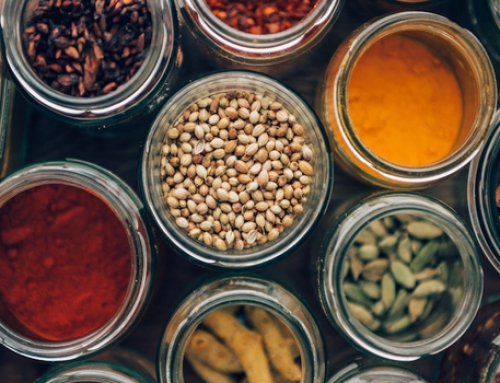Living off the land for generations, a people can truly find and gather to themselves a bevy of knowledge and wisdom when it comes to health and wellness. In fact, many of the medicine men and healers of the tribes found on this American soil were herbalists and apothecaries in their own right as well as being spiritual guides to their community. Native Americans believe that illness is a sign of a misalignment in spirit as well as in the physical body. Addressing the spiritual well-being of the sick is considered equally or even more important than addressing the actual physical ailments. This idea seemed preposterous to the profoundly Christian settlers (who were still bloodletting with leaches at the time) but it comes full circle to today’s modern scientific belief that our emotions, as well as our spiritual health, play a substantial role in our physical well being.
Long before the Europeans
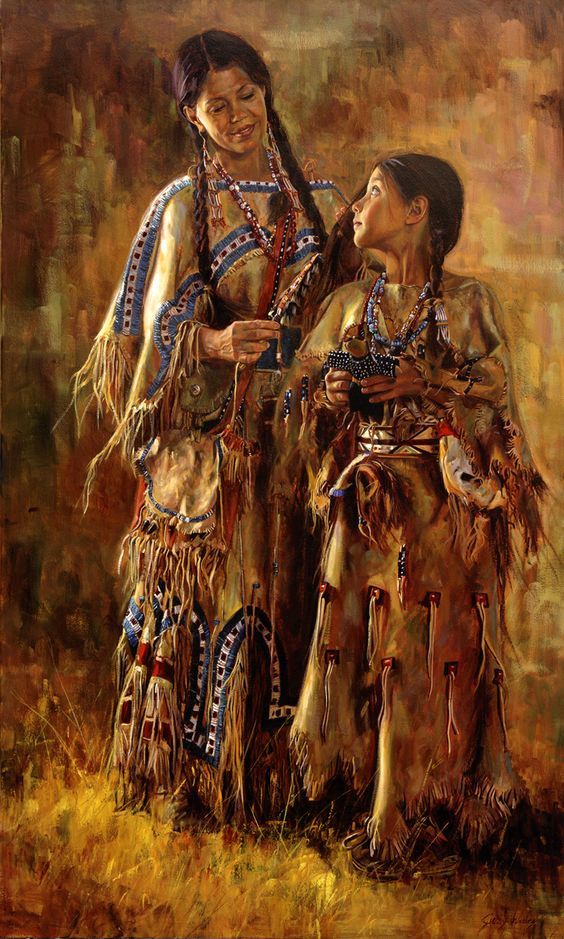 On the North American continent, indigenous people were practicing herbalism. Some of their knowledge of how plants could be used for wellness came from their keen observation of the wildlife around them. They observed that animals; the deer, elk, and bear sought out plants to eat when they were sick. They saw the animals recover and knew to experiment with these herbs and plants to heal themselves. An example illustrating this was the 1534 second exploration of the St. Lawrence River by French explorer Jacques Cartier. Winter was upon them, and it was bitterly cold and the French were not prepared. They were stranded surviving on old rations and only rarely eating a meal of fresh game. They became extremely sick with the disease that we now recognize as scurvy, 25 men died.
On the North American continent, indigenous people were practicing herbalism. Some of their knowledge of how plants could be used for wellness came from their keen observation of the wildlife around them. They observed that animals; the deer, elk, and bear sought out plants to eat when they were sick. They saw the animals recover and knew to experiment with these herbs and plants to heal themselves. An example illustrating this was the 1534 second exploration of the St. Lawrence River by French explorer Jacques Cartier. Winter was upon them, and it was bitterly cold and the French were not prepared. They were stranded surviving on old rations and only rarely eating a meal of fresh game. They became extremely sick with the disease that we now recognize as scurvy, 25 men died.
One day Jacques Cartier met up with Dom Agaya (a native) whom he had seen two weeks earlier at which time he had been extremely ill with the same disease. Cartier finding Dom Agaya now to be in good health questioned him about what had healed him. He learned that the Iroquois women had brewed him a herbal tea containing juniper bark and needles and had used the tea dregs as a herbal poultice for his swollen leg. The French tried this herbal brew and rapidly recovered. According to the record set forth by Cartier after his expedition.
Indigenous tribes have also worked and communed with plants and herbs believing that there was an exchange of healing information from the plants themselves that guided them through the process of selecting the right herbs and plants for healing. “All plants are our brothers and sisters. They talk to us and if we listen, we can hear them.” The vital energy that moves through the plant world is believed to be the same vital energy that moves through all of life on earth.
When you truly listen, throwing out the distractions of modern living out from your mind, and simplifying your expectations of what’s around you. Call it intuition, call it the sixth sense, but all who have tried and succeeded in doing so start to feel more connected to the natural world around them. They start seeing creation in the light it should be, in the plant and animal life around them and how it truly affects them. And like many native Americans in the past who sought to be in harmony with nature, we feel the same pull, and start to crave the peaceful vibrational harmony found there.
Plants were Carefully Studied
The Native Americans over a couple of thousand years have been contributing to the huge knowledge base of over 500 herbal plants. This plant and herbal knowledge learned and used by these early tribes were passed down orally for the most part as very little was written.
Many herbs that were discovered and used by Native Americans are used today in the ways in which the Native American people used them.
Following is a short list of herbs that were used by the earliest inhabitants of the North American continent and the knowledge of which has passed down to herbalists to use today:
- Black Cohosh (Actaea spp.)
- California Poppy (Eschscholzia californica Cham)
- Devil’s Club (Echinopanaxhorridum)
- Echinacea (Echinacea angustifolia)
- American Ginseng (Panax quinquefolias)
- Goldenrod (Solidago spp.)
- Goldenseal (Hydrastis canadensis L.)
- Gravelroot/Joe Pye Weed (Eupatorium purpureum)
- Hawthorn (Crataegus spp.)
- Horsetail (Equisetum arvense)
- Lady’s Slipper (Cypripedium parviflorum and C. reginae)
- Magnolia (Magnolia spp.)
- Mesquite (Prosopis glandulosa)
- Milkweed (Asclepias spp.)
- Mint (Mentha arvensis)
- Nettle (Urtica dioica)
- Oak (Quercus rubra)
- Oregon Grape (Mohania aquifolium)
- Pine (Pinus spp.)
- Sassafras (Sassafras alibidum)
- Self Heal (Prunella vulgaris)
- Sweet Flag (Acorus calamus)
- Willow (Salix spp.)
- Wormwood (Artemisia campestris)
- Yarrow (Achillea millefolium)
- Yucca (Yucca elata Englemann)
Overall TakeAway
Each has its use, each has its purpose and effect on the human body. And as so many things are, their effect and use for you is on an individual level. How your system reacts to, say, Yarrow, can be different from another. Generally speaking, it has a certain scope of efficacy that can be expected. But unlike the synthetic drugs you get from Big Pharma, most plants aren’t of varying degrees of toxins with their ill side-effects. They are taken until the body returns to the balance that it seeks, that the organs and cells within craving for, and for which imbalance we are suffering from.
It is for us to put in the homework, do our due diligence to listen to our bodies, and find the solutions towards gaining that balance that it seeks, naturally through the products given us from Providence to achieve or reacquire that harmony within.
Now, as a reminder, I am not a doctor, nor do I pretend to be. Nor am I a pharmacist, or a clinical botanist. I am only seeking the truth and how I can square myself to it. If you have any concerns, please consult your family physician for their professional opinions, as I have.

